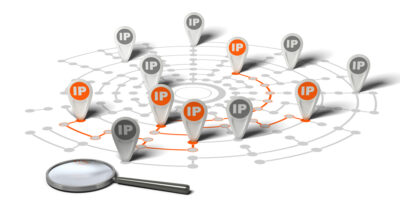 The marketing industry is swimming with buzzwords. New terms seemingly pop up every day or week. At the same time, some are consistently evolving. That is the case with target marketing, as marketing professionals can whittle down target markets to as small as a single person. IP Targeting is one of the latest advances in the world of marketing and hyper-personalized customer communications.
The marketing industry is swimming with buzzwords. New terms seemingly pop up every day or week. At the same time, some are consistently evolving. That is the case with target marketing, as marketing professionals can whittle down target markets to as small as a single person. IP Targeting is one of the latest advances in the world of marketing and hyper-personalized customer communications.
IP targeting takes the same principle as geo-fencing and evolves it to the next level. Geo-fencing groups IP addresses together by region, whereas IP targeting matches individual names and physical addresses with their associated IP address.
Benefits of Marketing with IP Targeting
Matching an IP address with a physical address is a powerful marketing tactic. That allows companies and businesses to place their ads directly in front of the people for the most impact.
Additionally, businesses can market by securing the suite, or office number of a decision-maker, and associating it with their IP address. That drives a variety of metrics like conversion rates and sales actions.
1. Hyper-Personalized
IP targeting is a marketing tactic that essentially distills target markets down to a single consumer. The ability to directly advertise to a single person through their IP address is sophisticated and allows for the most personal marketing messaging possible.
For example, a sporting goods company could use IP targeting to market to athletic clubs, high school sports programs, universities, and even professional facilities.
At the same time, a dentist office could craft a campaign targeting high-school IP addresses around PTA meetings, and other parent-driven events, to win new business from the parents of teens.
2. Cost-Efficient
The bottom line is another one of those terms that have evolved over the years and are now more often referred to as the Triple Bottom Line. One of the three lines is still the financial stability of the company. While the other two lines are related to its obligation to society and the environment.
Regardless, marketing professionals are as budget-conscious as any and have a sense that savings in one place, mean additional spending elsewhere. In traditional geofencing campaigns or even direct mail campaigns, conversion rates can be as little as 10%-25%.
However, with IP targeting, there’s much less wasted ad-spending. Meanwhile, conversion rates with IP targeting are much higher. Saving your marketing team money and increasing profits.
3. Improved Follow-Ups
One of the strongest arguments for IP targeting in marketing is that pairing it with a direct marketing campaign. That can lead to significant sales, consumer-based-actions, and drive other business metrics.
Reinforcing digital ads that are strategically placed based on IP addresses with physical mailing and direct mail campaigns can push consumers to become customers. After all, that is the underlying goal of almost every marketing campaign.
Conclusion
Marketing strategies, tactics, and technologies are constantly shifting and evolving. IP targeting is one of the latest and most significant strides seen in marketing technology over the past decade.
Companies all over the globe have been searching for ways to better communicate with customers. IP targeting allows businesses to place their ads where they’ll have the most impact. Ultimately elevating the marketing team’s efficiency, saving money on ad-campaigns, and boosting sales metrics.
